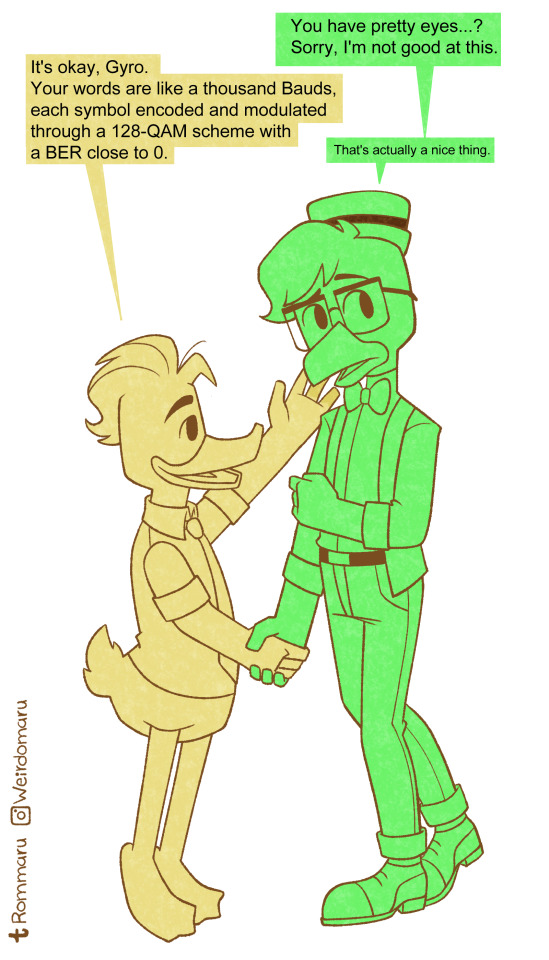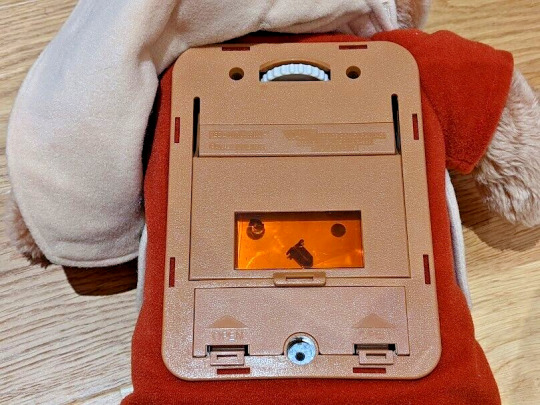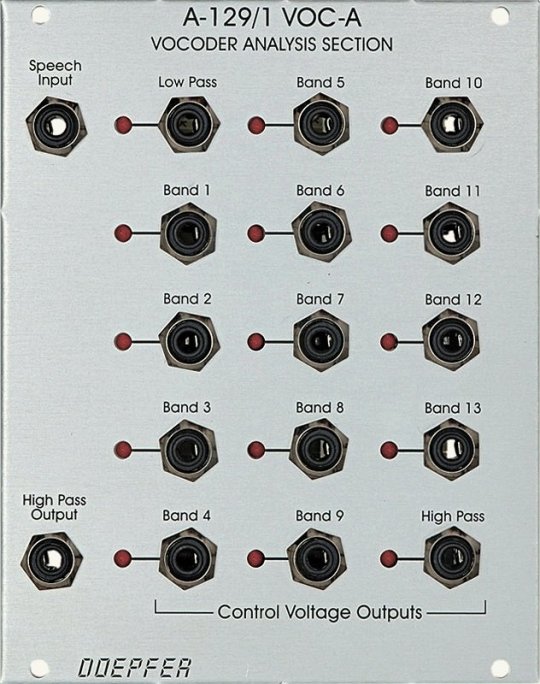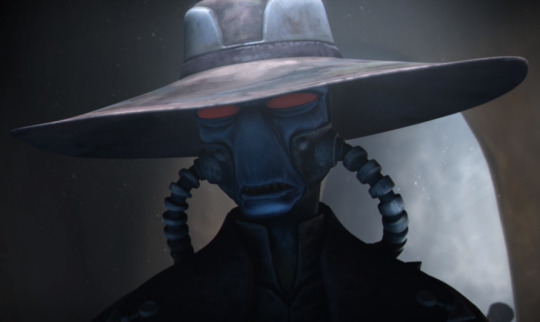#Amplitude Modulation
Explore tagged Tumblr posts
Text
Cyanobacteria, an ancient lineage of bacteria that perform photosynthesis, have been found to regulate their genes using the same physics principle used in AM radio transmission. New research published in Current Biology has found that cyanobacteria use variations in the amplitude (strength) of a pulse to convey information in single cells. The finding sheds light on how biological rhythms work together to regulate cellular processes.
Continue Reading.
#Science#Biology#Microbiology#Molecular Biology#Cyanobacteria#AM#Amplitude Modulation#Circadian Rhythm
76 notes
·
View notes
Text
The History Of Television
Television refers to a system for transmitting visual images and sound that are reproduced on screens, primarily to broadcast programs for entertainment, information, and education. History of Television Early Concepts and Development: 1870s-1900s: The concept of transmitting images wirelessly dates back to the late 19th century. Paul Nipkow’s invention of the Nipkow disk in 1884 was an early…
#4K#8K#ABC#Amazon Prime Video#Amplitude Modulation (AM)#Analog TV Waves#broadcast#cable television#cathode ray tube (CRT)#CBS#Charles Francis Jenkins#Color television#digital streaming services#Digital TV Waves#DigitalTelevision#Electromagnetic Waves#Frequency Modulation (FM)#gamma rays#HD#HDTV#High-Definition Television#History Of Television#Hulu#infrared#John Logie Baird#Light Emitting Diode (LED)#Liquid Crystal Display (LCD)#microwaves#Modulation#NBC
4 notes
·
View notes
Text
#@Acacia#Cisco#pam4#pulse#amplitude#modulation#4 level#400g per line#zr#zr+#qdfp#dd#amazon#ebay#walmart#newegg#alcatel#lucent#nokia#sharp
0 notes
Text
youtube
Intro to Synthesis Part 3, features and controls
#synth#synthesizer#synthesis#ny#school#noise#sync#amplitude#modulation#amp#pitch#bend#wheel#velocity#sensitivity#aftertouch#keyboard#tracking#attack#decay#release#sustain#detune#tutorials#newyork#Youtube#adsr#matrixsynth
0 notes
Text

Fenro Week Day 1 : Nerd flirting @fenroweek2024
Translation: With very little words, Gyro can say a lot, Fenton has no trouble understanding him.
Full nerdy explanation under the cut for anyone who is curious.
Baud: unit of measurement of symbol rate. This is, how many symbols are transmitted per second in a communication system.
Symbol: a word composed by a given number of bits. Remember bytes? Those are symbols of 8 bits, however symbols can have any lenght.
128-Quadrature Amplitude Modulation: a type of digital modulation process capable to use 128 wave shapes to represent data. 128-QAM uses symbols of 7 bits length.
Bit Error Rate: number of wrong bits in a symbol reconstructed by the receiver device.
A lot of feelings (1000 Bauds) within a few words but with deep meanings (128-QAM) and because Fenton knows Gyro so well there's no place for misunderstandings (BER close to 0). Get it? Please tell me you do 😭
#fenro#fenro week 2024#fenro week#gyro gearloose#fenton crackshell cabrera#ducktales 2017#ducktales#dt17#fanart#Baud is one of my favorite unit for measurement and that's were it started#did I get carried away by the prompt? maybe#I studied engineering for this moment
91 notes
·
View notes
Text
My theory regarding: There's Better Be A Mirrorball by Arctic Monkeys
[PART 1]

In 2013 Arctics published an album called AM. An album that could stand for many things some ideas of what it could be is...
After Midnight / Amplitude Modulation / Alex Miles
in 2016 a TLSP song was published with a film called: Miracle Aligner. The first two letters of each word start with Mi & Al. Remind you of anything or rather anyone familiar? To me reminds me of Miles and Alex.
MI-racle Al-igner.
There'd Better Be A Mirrorball makes me think of something or someone's similar...
MI-rrorb-AL-l. That's literally Alex and Miles' first two initials of their first names nature within the word mirrorball itself. Coincidence for the song by AM? I THINK NOT. Also what's funny in a positive sense to me is Mirrorball and Miracle Aligner sound similar because of 'Mir' and 'al' sounds. Is this a coincidence even? I THINK NOT ALSO!



Images borrowed from pinterest
#milex#alex turner#miles kane#bacusdraculacape#arctic monkeys#am#am theory#the car#there'd better be a mirrorball#part two gonna be publizhed to this later tonight when i get another free minute promise 🤞😎#There'd be AMI-rrorb-AL-l 🪩#🪩
40 notes
·
View notes
Text





youtube


Teddy Ruxpin (1984) by Ken Forsse, Alchemy, distributed by Worlds of Wonder (WoW). Teddy Ruxpin was launched in 1985 by toy manufacturer Worlds of Wonder, becoming one of the best-selling toys of 1985/86. Ken Forsse was an Imagineer who helped design many of Disneyland's animatronic attractions. Forsse and his team at Alchemy managed to adapt theme-park technology to create the world's first animated talking toy. Alchemy was founded in 1980 by Ken Forsse, and Teddy Ruxpin became the launch product for Worlds of Wonder (WoW), founded in 1985 by former Atari sales president Don Kingsborough, and former Atari employee Mark Robert Goldberg.
Teddy's mouth and eyes move while it tells stories from a built-in audio tape cassette deck. Conventional cassette tapes carry two audio tracks for stereo sound reproduction. Teddy Ruxpin's cassettes use the left track for audio, while the right data-track controls the three servo motors: 1 for the eyes, 1 for the upper mouth and one for the lower jaw. The original Teddy Ruxpin uses Pulse Position Modulation (PPM), where the pulse position in time is proportional to the amplitude of the control signal.
"Seeing something that I had created become as successful as Teddy Ruxpin was incredible. There is a long list of wonderful memories: watching so many talented people at Alchemy working on and adding to my creation; realizing that companies in Silicon Valley, Canada and many Asian countries were building a toy I had designed; witnessing the birth of a new toy category, (Electronic Plush); watching television commercials and segments on news broadcasts describing Teddy Ruxpin. The most humbling experience was reading the many letters describing the reaction of children in all parts of the country to Teddy Ruxpin. There was a letter about a child who lapsed in and out of a coma and could only be awakened when Teddy Ruxpin sang to her." – Interview with Teddy Ruxpin Creator Ken Forsse, Teddy Ruxpin Online.
47 notes
·
View notes
Text

Amplitude Modulation
88 notes
·
View notes
Text
Damn girl would i absolutely jump through a hoop and roll around like a complete dog if that got me my very own A-129-1

Look at how sexy this thing is. Ahh. You know you love it. AND! It can, and should, be misused as an insane feedback generator by patching your entire composition's mix into it and using the amplitude-demodulated bands to control stuff about the said composition in a neverending loop.
I don't even need the vocoder synthesis counterpart, although it would've been cool. This thing on its own is a total pandora's box.
Now, i KNOW there's like 100 eurorack modules with a similar idea. I don't care, they don't look this hot and cram everything in 4hp and probably run a DSP chip anyways. This is pure sex on a stick.
(If you have it and want to sell - i'm buying)
#aubery.txt#not a robofucker but look at her#transition goals?#seriously though wow#very sad it's discontinued
10 notes
·
View notes
Text
I casually explained the cause of Bane's modulated “accent” in Stars Above and then promptly forgot about it.
Headcanon:
“So, ye've gotta lil' problem on yer hands, dhen?” Bane feigned interest to keep his potential employer entertained, his voice tinged with a certain air of sinister directness, words laced with an accent that was commonplace among his kind; his vocal cords vibrated in a unique way, even though he spoke in Basic. Duros' epilaryngeal tubes were naturally more narrow; it took practice to not slip up, as this language was not his first.
OK, SO.
I have already talked about how I think Duros use cutaneous respiration, absorbing oxygen through their skin and also the slits beneath their eyes where their olfactory organs are:
“Cutaneous respiration, or cutaneous gas exchange (sometimes called, skin breathing),[1] is a form of respiration in which gas exchange occurs across the skin or outer integument of an organism rather than gills or lungs. Cutaneous respiration may be the sole method of gas exchange, or may accompany other forms, such as ventilation. Cutaneous respiration occurs in a wide variety of organisms, including insects, amphibians, fish, sea snakes, turtles, and to a lesser extent in mammals. It also occurs in reptiles."
That is not to say he doesn't have lungs, he definitely does (Cutaneous respiration may be the sole method of gas exchange, or may accompany other forms, such as ventilation), but this may just be the way that Duros absorb oxygen, as it is obvious he doesn't have a nose, and these organs beneath his eyes must be slit-like or nearly microscopic, as we have never seen them, even with the mask off.

It makes sense Bane can breathe from the same place he can register smells, BUT, Cad has a different accent in Clone Wars than he does in The Bad Batch, and I felt this would be a fun way to explain it. The leading theory was it was due to the mechanical breathing tubes he sounds this way; his voice is modulated, BUT, Duros in Battlefront 2 ALSO SOUND LIKE THIS. And to me, Durese sounds a lot like Huttese.
youtube
I tend to think this ALSO sounds modulated, as stated above, therefore maybe it has something to do with the functionality / " cranial edge of their larynx."
Found in the Journal of the Acoustical Society of America:
A hypothesis was presented: The shape (length and diameter) of the epilaryngeal tube in nonhuman mammals is related to morphological parameters (vocal fold morphology, larynx size, body size) and parameters characterizing the species vocal repertoire (repertoire size, maximum sound amplitude, fundamental frequency range, occurrence of nonlinear phenomena). Preliminary results indicate that the length of the epilaryngeal tube is a poor predictor of repertoire characteristics such as maximum sound amplitude and fundamental frequency range. However, species with a prominent epilaryngeal tube produce a large proportion of high fundamental frequency call types.
Basically, what if Duros had NARROW tubes? Thus, this is the cause of the way they sound. It doesn't have to do with the BREATHING tubes being physically down his throat - the breathing tubes provide extra oxygen in the case he is force choked and his normal air pathway is blocked, therefore increasing intake through the scales/slits - it has to do with the actual shape, and "morphological parameters" of the Duros as a species.
The accent itself is the accent of the Descent Ghetto, or the accent of the last of the Duros who populated the planet before escaping to the orbiting way stations to avoid the pollution of their dying home world. That's just how it comes out in Basic.
As Bane spent more and more time around sentient beings, he possibly began to lose the accent, or he chose to undergo vocal training, most likely in the privacy of his hideaway, and needed something or someone to use as an example. Maybe he also has to train himself to relax his throat, which is entirely possible.
Now let's say he hates holomovies, but the only ones he can stand to watch are the westerns. Maybe he liked the style of the old cowboys, too. ;D I think you know where I am going with this.
This may also explain why Shriv doesn't have an accent, but he does have a lisp. He may or may not have been raised on Duro around other Duros, and he may have spent so much time around humans or other beings who speak Basic that he just talks normal and not like a Duros at all.
It should also be noted Bane slipped up once in the latest episode of the Bad Batch. There was a line that @allsystemsblue pointed out that also sounded like his old Clone Wars way of speaking. This proves to me he mostly “got rid of it,” but still slips up on occasion, and most likely especially when emotions are high, as his epilaryngeal tubes are still narrow. It is a part of his morphology.
BONUS (found after the fact. seems to me, I am right. ;D):
youtube
#duros#cad bane#shriv suurgav#star wars#clone wars#bad batch#battlefront 2#alien biology#Youtube#headcanons
64 notes
·
View notes
Text
had the same very interesting experience twice today which was seeing a good explanation of a thing I mostly understand already that is aimed at an absolute beginner, bringing them up to a high level of conceptual understanding in one long continuous delivery. Those two things are 1) this Matt Parker video on Quadrature Amplitude Modulation and 2) This Bartosz Ciechanowski article on how aerofoils work.
youtube
These both start off at a very fundamental level - "Do you know how a sine wave looks", and "You know about wind" - and build up to a fairly good explanation of the thing they want to talk about.
Ciechanowski's article is astoundingly detailed, beginning with ideas of what air movement means, detouring through the fundamental origins of air pressure and a very convincing series of arguments about how air pressure is realized as a force applied to an object, into fluid flow and viscosity, and finally using all this to describe the function of an aerofoil.
Parker's video is not as thorough, but still starts off from a more conventional time domain representation of waves before switching fairly smoothly into the more engineering-y representation as a point in complex space (albeit without calling it that) to show how QAM encodings are distributed for efficiency.
Now my question is basically, how good are these. I will always fill in the bits I know when I read these, so I might miss holes. I feel like Parker is definitely the one that could lose you more easily, it's a short video so it maybe doesn't cleanly explain how a sine wave maps onto an XY plot, although the visualizations probably help you get it even if you don't get it at first. Ciechanowski's article is very, very detailed, full of interactive simulations and widgets to help you get everything, building from almost nothing, but I will be honest I skipped a lot of it when it was clear I got the point, I've already got the link between brownian motion and pressure down, you don't have to reiterate.
If you aren't familiar with either of these I'd be interested to hear your opinion.
41 notes
·
View notes
Text
Jest: A Concept for a New Programming Language
Summary: "Jest" could be envisioned as a novel computer programming language with a focus on humor, playfulness, or efficiency in a specific domain. Its design might embrace creativity in syntax, a unique philosophy, or a purpose-driven ecosystem for developers. It could potentially bridge accessibility with functionality, making coding intuitive and enjoyable.
Definition: Jest: A hypothetical computer language designed with a balance of simplicity, expressiveness, and potentially humor. The name suggests it might include unconventional features, playful interactions, or focus on lightweight scripting with a minimalist approach to problem-solving.
Expansion: If Jest were to exist, it might embody these features:
Playful Syntax: Commands and expressions that use conversational, quirky, or approachable language. Example:
joke "Why did the loop break? It couldn't handle the pressure!"; if (laughs > 0) { clap(); }
Efficiency-Focused: Ideal for scripting, rapid prototyping, or teaching, with shortcuts that reduce boilerplate code.
Modular Philosophy: Encourages user-created modules or libraries, reflecting its playful tone with practical use cases.
Integrated Humor or Personality: Built-in error messages or prompts might be witty or personalized.
Flexibility: Multi-paradigm support, including functional, procedural, and object-oriented programming.
Transcription: An example code snippet for a Jest-like language:
// Hello World in Jest greet = "Hello, World!"; print(greet); laugh();
A Jest program that calculates Fibonacci numbers might look like this:
// Fibonacci in Jest fib = (n) => n < 2 ? n : fib(n-1) + fib(n-2);
joke "What's the Fibonacci sequence? You'll love it, it grows on you!"; n = 10; print("The Fibonacci number at", n, "is:", fib(n));
Potential Domains:
Gamified education
Creative industries
AI-driven storytelling
Interactive debugging
Would you like me to refine or explore additional aspects?
Certainly! If we were to imagine Jest as the brainchild of a creative coder or team, their portfolio would likely include other innovative or experimental programming languages. Let’s expand on this concept and invent some plausible complementary languages the same inventor might have designed.
Related Languages by the Inventor of Jest
Pantomime
Description: A visual programming language inspired by gesture and movement, where users "drag and drop" symbols or create flowcharts to express logic. Designed for non-coders or children to learn programming through interaction.
Key Features:
Icon-based syntax: Conditional loops, variables, and functions represented visually.
Works seamlessly with Jest for creating visual representations of Jest scripts.
Sample Code (Visual Representation): Flowchart blocks: Input → Decision → Output.
Facet
Description: A declarative programming language focusing on creativity and modularity, aimed at artists, designers, and 3D modelers. Facet could integrate well with game engines and creative suites like Blender or Unity.
Key Features:
Embedded visual tools for shaders, animations, and simulations.
Simplified expressions for creative coding (e.g., animations and generative art).
Sample Code:
shape = circle(radius: 10, color: "blue"); animation = wave(shape, amplitude: 5, frequency: 2); render(animation, duration: 10s);
Quip
Description: A lightweight scripting language built for humor, similar to Jest, but more focused on natural language processing, chatbots, and interactive storytelling.
Key Features:
Syntax mirrors conversational English.
Designed for AI integration, especially in storytelling apps.
Sample Code:
character "Alice" says "Hello! What's your name?"; user_input -> name; character "Alice" says "Nice to meet you, {name}!";
Cryptic
Description: A language for designing cryptography algorithms and secure communications. Aimed at developers interested in blockchain, encryption, or cybersecurity.
Key Features:
High-level abstractions for cryptographic primitives.
Secure-by-design philosophy.
Sample Code:
key = generate_key(algorithm: "AES", length: 256); encrypted_message = encrypt("Hello, World!", key); print(encrypted_message);
Harmony
Description: A reactive programming language for building interactive user interfaces, designed to be highly interoperable with Jest and other tools in the suite. Perfect for web developers and app creators.
Key Features:
Two-way data binding with minimal boilerplate.
Component-based architecture.
Sample Code:
component Button { state: clicked = false; onClick() { clicked = !clicked; alert("Button clicked!"); } } render(Button);
Inventor’s Vision
The coder or team behind Jest and these complementary languages would likely be passionate about:
Accessibility: Making programming intuitive and fun for people of all skill levels.
Playfulness: Infusing coding with creativity, humor, and expressiveness.
Interoperability: Ensuring all their languages work well together for larger projects.
Would you like me to dive deeper into one of these languages, conceptualize others, or expand Jest further?
Expanded Concepts and Bridge Languages
Pantomime
Expansion: Adds support for AR/VR interfaces where users use gestures to program logic in 3D space. For example, drawing a loop physically creates a repetitive cycle.
Bridge Language: GestureScript: Converts AR/VR gestures from Pantomime into traditional code for broader applications.
Facet
Expansion: Enhanced for generative AI tools, allowing users to define complex artistic styles and AI-driven procedural designs.
Bridge Language: PixelForge: Focused on exporting Facet code into game engines, enabling real-time rendering pipelines for interactive environments.
Quip
Expansion: Includes pre-trained AI models for dynamic storytelling, allowing Quip scripts to evolve based on user interaction.
Bridge Language: Narrate: Combines Quip scripts with voice-to-text technologies for live storytelling in games or educational tools.
Cryptic
Expansion: Introduces quantum-safe cryptography primitives and allows simulation of blockchain-like ecosystems for testing purposes.
Bridge Language: CipherBridge: Translates Cryptic code into various blockchain frameworks like Ethereum or Solana.
Harmony
Expansion: Gains support for cross-platform development, allowing users to write code for web, mobile, and IoT devices simultaneously.
Bridge Language: Symphony: Converts Harmony components into platform-native scripts for seamless integration.
Additional Bridge Languages
Echo: Bridges Quip and Jest, enabling storytelling code to trigger functional scripts for immersive experiences.
Morph: A universal language that compiles any Jest family code into executable binaries for specific operating systems.
Thread: Integrates Cryptic and Harmony to build secure, reactive user interfaces for fintech applications.
Canvas: Bridges Facet and Pantomime to create interactive art in AR/VR, blending visual coding with gesture inputs.
Let me know if you'd like a deeper dive into any specific language or bridge concept!
Here's a detailed exploration of Echo, Morph, Thread, Canvas, and all previously mentioned languages, emphasizing their unique applications and advanced functionalities.
Expanded Bridge Languages
Echo
Purpose: Links storytelling elements in Quip with functional programming in Jest, enabling dynamic, immersive interactions between narrative and logic.
Key Features:
Story-driven logic triggers: e.g., a character’s dialogue prompts a database query or API call.
Integration with AI tools for real-time responses.
Use Case: AI-driven chatbots that incorporate both storytelling and complex backend workflows.
Sample Code:
story_event "hero_arrives" triggers fetch_data("weather"); response = "The hero enters amidst a storm: {weather}.";
Morph
Purpose: Acts as a meta-compiler, translating any language in the Jest ecosystem into optimized, platform-specific binaries.
Key Features:
Universal compatibility across operating systems and architectures.
Performance tuning during compilation.
Use Case: Porting a Jest-based application to embedded systems or gaming consoles.
Sample Code:
input: Facet script; target_platform: "PS7"; compile_to_binary();
Thread
Purpose: Combines Cryptic's security features with Harmony's reactive architecture to create secure, interactive user interfaces.
Key Features:
Secure data binding for fintech or healthcare applications.
Integration with blockchain for smart contracts.
Use Case: Decentralized finance (DeFi) apps with intuitive, safe user interfaces.
Sample Code:
bind secure_input("account_number") to blockchain_check("balance"); render UI_component(balance_display);
Canvas
Purpose: Fuses Facet's generative design tools with Pantomime's gesture-based coding for AR/VR art creation.
Key Features:
Real-time 3D design with hand gestures.
Multi-modal export to AR/VR platforms or 3D printers.
Use Case: Collaborative VR environments for designers and architects.
Sample Code:
gesture: "draw_circle" → create_3D_shape("sphere"); gesture: "scale_up" → modify_shape("sphere", scale: 2x); render(scene);
Deep Dive into Main Languages
Jest
Philosophy: A playful, expressive scripting language with versatile syntax tailored for humor, experimentation, and creativity.
Core Application: Writing scripts that blend functional programming with a whimsical, human-readable style.
Pantomime
Expanded Features: Includes AI-driven gesture recognition for predictive modeling and natural motion capture.
Advanced Use: Developing AR apps for rehabilitation therapy where exercises are coded as gestures.
Facet
Advanced Use: Procedural generation in games, defining terrains, weather systems, and NPC behaviors with artistic flair.
Quip
Advanced Features: Integrates pre-trained language models for nuanced, character-driven dialogue trees.
Advanced Use: Creating adaptive narratives in games where user decisions alter the story arc.
Cryptic
Advanced Features: Quantum-safe algorithms and AI-enhanced key generation for unbreakable security.
Advanced Use: Designing multi-layered blockchain ecosystems with Cryptic’s high-level abstractions.
Harmony
Advanced Features: Adaptive UIs that respond to user emotion, tracked via AI-enhanced cameras.
Advanced Use: Apps for mental health, where interfaces adjust to user stress levels.
Proposed New Bridge Languages
Chord
Bridges Harmony and Facet for designing interactive music-based visual art.
Use Case: Music videos where the visuals respond to real-time sound input.
Path
Links Cryptic and Canvas for secure AR/VR environments.
Use Case: Virtual meetings in secure, customized 3D spaces.
Fable
Connects Quip and Pantomime for storytelling via interactive gestures.
Use Case: VR education apps where lessons are taught through immersive narratives.
Would you like a specific implementation plan for any of these languages or applications?
#playstation7#deardearestbrands#ps7#digitalconsole#framework#python#celestiallink#Code#Script#Language#pantomime#Echo#Canvas#Fable#Morph#Bridge#Path#Chord#Harmony#Cryptic#Quip#Facet
9 notes
·
View notes
Text


During museum visiting hours, specimens are to stand at attention. Cells are to be kept at 100% humidity and 37°C. To ensure that specimens stay awake, it is recommended that high-amplitude, high-frequency noise is broadcast into the cell at all times. Some modulation in amplitude and frequency is recommended. Other effective regimens include sharp percussive noises and static noise. It is important to note the threshold of comfortable amplitude for a given specimen, so that broadcast amplitude can be kept above this threshold.
104 notes
·
View notes
Text

Astronauts' eyes weaken during long space missions, raising concerns for Mars travel
The low levels of gravity (microgravity) in space cause significant changes in astronauts' eyes and vision after six to 12 months aboard the International Space Station (ISS), according to a study published in the IEEE Open Journal of Engineering in Medicine and Biology.
Université de Montréal ophthalmologist Santiago Costantino found that at least 70% of astronauts on the ISS have been affected by spaceflight-associated neuro-ocular syndrome, or SANS.
In the biophotonics research unit he runs at the UdeM-affiliated Maisonneuve-Rosemont Hospital, Costantino assembled a group of researchers to identify the biomechanical changes responsible for this disorder.
They analyzed data collected by the Canadian team at NASA on 13 astronauts who spent between 157 and 186 days on the ISS.
The subjects had an average age of 48 and came from the U.S., European, Japanese and Canadian space agencies; 31% were women; eight were on their first mission.
Three parameters involved
The researchers compared three ocular parameters before and after the astronauts' space missions: ocular rigidity, intraocular pressure, and ocular pulse amplitude.
They measured ocular rigidity using optical coherence tomography with a customized video module to improve the quality of images of the choroid. The other two parameters, intraocular pressure and ocular pulse amplitude, were measured using tonometry.
The study found significant changes in the biomechanical properties of the astronauts' eyes: a 33% decrease in ocular rigidity, an 11% decrease in intraocular pressure, and a 25% reduction in ocular pulse amplitude.
These changes were accompanied by symptoms including reduced eye size, altered focal field and, in some cases, optic nerve edema and retinal folds.
The researchers also found that five astronauts had a choroidal thickness greater than 400 micrometers, which was not correlated with age, gender or previous space experience.
"Weightlessness alters the distribution of blood in the body, increasing blood flow to the head and slowing venous circulation in the eye," explained Costantino. "This is probably what causes the expansion of the choroid, the vascular layer that nourishes the retina."
Long-lasting changes
According to the researchers, the expansion of the choroid during weightlessness could stretch the collagen in the sclera, the white outer layer of the eye, causing long-lasting changes in the eye's mechanical properties.
They also believe that blood pulsations under microgravity can create a water-hammer effect in which sudden changes in blood-flow-pressure cause a mechanical shock to the eye, leading to significant tissue remodeling.
Eyes return to normal
According to the researchers, these ocular changes are generally not cause for concern when the space mission lasts six to 12 months. Although 80% of the astronauts they studied developed at least one symptom, their eyes returned to normal once back on Earth.
In most cases, wearing corrective eyeglasses was sufficient to correct the symptoms developed aboard the ISS.
However, the research community and international space agencies are cautious about the consequences of longer missions, such as a flight to Mars. The eye-health effects of prolonged exposure to microgravity remain unknown, and no preventive or palliative measures now exist.
The Maisonneuve-Rosemont research team is waiting for more data from NASA to continue its investigations.
"The observed changes in the mechanical properties of the eye could serve as biomarkers to predict the development of SANS (spaceflight-associated neuro-ocular syndrome)," said Costantino.
"This would help identify at-risk astronauts before they develop serious eye problems during long-duration missions."
4 notes
·
View notes
Text
am radio is amplitude modulation and fm is frequency modulation.. so xm radio is...? fucking xanax modulation??
3 notes
·
View notes
Text

Metalenses phase characterization by multi-distance phase retrieval
Metalens is a kind of optical metasurface composed of metaatoms for manipulating incoming light's amplitude, phase, and polarization. Unlike traditional refractive lenses, metalens can modulate the wavefront from plane to spherical at an interface. It has garnered widespread attention due to its novel physical properties and promising potential applications. As a phase-modulated optical functional component, phase distributions are the key parameter of metalens. However, in the optical frequency band, it is difficult to measure the phase distribution directly. Instead of measuring phase, the mainstream measurement methods for characterizing metalens currently involve light field scanning and electron microscopy. However, these methods do not directly provide the phase response of metalens.
Read more.
7 notes
·
View notes